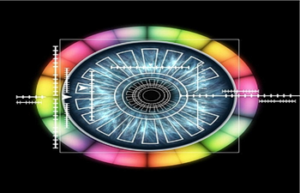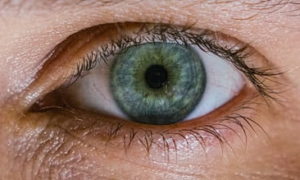 We might not be at the Terminator stage, but computers are becoming more interactive with humans every day. Our body parts have become an essential component when working with machines. Putting aside the creation of androids to look and act like us, there are also technologies that can look back at us and equate what they are looking at to a specific human being.
We might not be at the Terminator stage, but computers are becoming more interactive with humans every day. Our body parts have become an essential component when working with machines. Putting aside the creation of androids to look and act like us, there are also technologies that can look back at us and equate what they are looking at to a specific human being.
With that said, there is no doubt that the trend of new technologies materializing this early part of our 21st century is sure making a mark on our lifestyles. Video cameras, webcams, dash cams and cell phones are all over the place and whether you call it big brother is watching or you take the opposite approach that this technology is needed to help deter crime, it is here and is going nowhere but up.
This technology has provided the world with the ability to view situations we would have never have known about before and that is most apparent in the political and social environments. We are not here to take sides, nor is this what this article is about, but we couldn’t continue this discussion without at least mentioning how our lifestyles have been affected, for better or for worse.
Let’s Take a Look at One Specific Aspect of One Growing Technology – Biometrics Biotechnology
In a broad sense, biotechnology is the act of using technology to solve problems. In this case, we are looking at biometrics, which is a means by which machines solve a problem by identifying specific human beings.
What are the Uses of Biometrics?

Primarily, it is used to identify individuals, as each one of us has unique physical characteristics that are different from everyone else.
Most likely, many of us have seen these biotechnologies in action, probably from sci-fi movies, but this is not science fiction anymore. It is real! Let’s take a look at what biometrics can do!
There are a number of areas where biometrics comes into play.
- Fingers
- Face
- Eyes
- Palms
And this technology is used both in law enforcement to locate individuals who are wanted for criminal activity (facial recognition) and for people to secure devices, such as locks, laptops and mobile phones, to name a few.
The Apple iPhone is a perfect example of the usage of biotech. The iPhone 10 uses fingerprint detection to unlock it and the iPhone 11 uses facial recognition. You don’t even have to lift a finger (pardon the pun) but just hold it in front of you and viola – you have unlocked your device!
High-Tech Security is the Criminal’s Worst Nightmare
The use of video surveillance in everyday life has transformed the modus operandi of individual security measures. From iPhones capturing an unscrupulous person breaking the law to professional home security to high-tech radiation detection devices in Times Square, security has taken a giant leap forward and there is no doubt that biotechnology has grown along with it.
Fingerprint recognition, facial recognition, iris and voice recognition are all part of this security trend. Before we move on to discuss the benefits of these biometric measures, it is important to briefly define what entails biometric technology.
Biometrics: The Identification of Unique Physical Traits

Biometric technology has been developed on the concept that every individual is unique, due to several inherent physical and anatomical features. This means unique information can be used to identify people for access from everything from door entries to cell phones to highly secure devices, even top-secret computer systems.
Let’s have a look at some of these noteworthy benefits and the verification process.
Biometrics has Entirely Changed the Look of Databases
Gone are the days when governments had to maintain massive physical records to register their citizens. Now, with the help of biometric authentication, every citizen can be registered against his or her unique physical identity.
It is also worth mentioning that biometric databases don’t require high-end technological expertise. The technology providing fingerprint recognition has become really inexpensive in the last decade or so. This is the reason why even underdeveloped jurisdictions have managed to adopt biometrics for maintaining their citizen records.
Biometrics for Elections
The same databases are also being used in many countries to ensure transparent elections. There are minimal chances of discrepancies in biometric voting. Besides that, biometric identification has also helped several businesses in streamlining their client databases, but if that would happen in the US, there would be so much political fallout, especially now with the Russian interference issue, it would take another century before it would be implemented. By that time new technologies would have materialized.
Biometrics Makes Security Measures Fairly Foolproof
From managing the financial confidential information to establishing the security of a premise, biometric authentication has been proven to be a game-changer. For criminal elements, it’s almost impossible to hack the majority of biometric authentication processes. Additionally, its identity is non-transferable i.e. one can’t reassign their physical trait to someone else for any malevolent use. Few simple examples can demonstrate the effectiveness and success of biometrics security measures.
If an entry in any premises is subjected to fingerprint or iris authentication, instead of traditional entry passes and cards, then it is nearly impossible to get access to those secured parameters. People looking to get unauthorized access can temper and replicate entry cards and passes, but they can’t reproduce the unique physical and anatomical features of someone (barring sci-fi movies of course).
Instead of passwords and PIN access to use banking facilities, many financial institutes have implemented biometric authentications. For example, ATM skimming and hacking are causing losses of millions of dollars to consumers and banks.
For that reason, many banks have incorporated cardless ATM transactions in which users can withdraw money after verifying themselves through biometrics identifications in place of entering PINs and using banking cards that are prone to tampering.
Biometric Authentications are Accurate and Convenient
Biometric tools are a great way to instill accuracy in the verification processes. For every person, there is a single unique biometric feature for authentication, and it is inherently accurate i.e. one would have a definite pattern on their thumbs and finger marks. The machine would only verify any given person if it can accurately match his pattern with the existing database. One can say that biometrics can protect the accuracy of any authentication process from human error.
Moreover, biometric authentication has also brought a whole lot of convenience for people on both ends of the process. For instance, one doesn’t require carrying cards, remembering passwords and PINs to get access to their bank accounts. If you are a part of the biometric authentication process, you are literally walking with your login credentials all the time.
Similarly, databases composed of biometric information enable companies to use a single piece of concrete information to verify the identity of any individual. In addition, it is easier for companies to train their staff to look over the process of fingerprint authentication, retinal scanning or voice recognition.
Biometrics is Adaptable and Scalable Like No Other
From a small storefront that offers cellular connections to large conglomerates, regardless of the size of operations, use of biometric technology can be witnessed in every field of life. It has become only possible because of the scalable and adaptable nature of the technology. Every business can implement biometric security measures to the level they want their security to be beefed up.
Biometric Technology Offers Good Return on Investment
Security maintenance that follows traditional protocols eats up a sizable amount of resources. Therefore, it is always a huge concern for organizations. Biometric authentication and verification, on the other hand, offer comparatively good ROI to organizations. With a single device and software, they can set up a really good security blanket for their operations. Stationing a security guard to allow admission to a restricted premise is a recurrent expenditure for businesses. On the other hand, the same task can be carried out with a simple fingerprint scanner, which is a one-time investment.
Biometric Processes are Time Efficient
Biometric security measures also offer a significant level of time conservation. Within a fraction of a second, the identity of any individual can be confirmed through biometrics. Establishing swift entrance practice will eventually add up to accumulative work hours.
